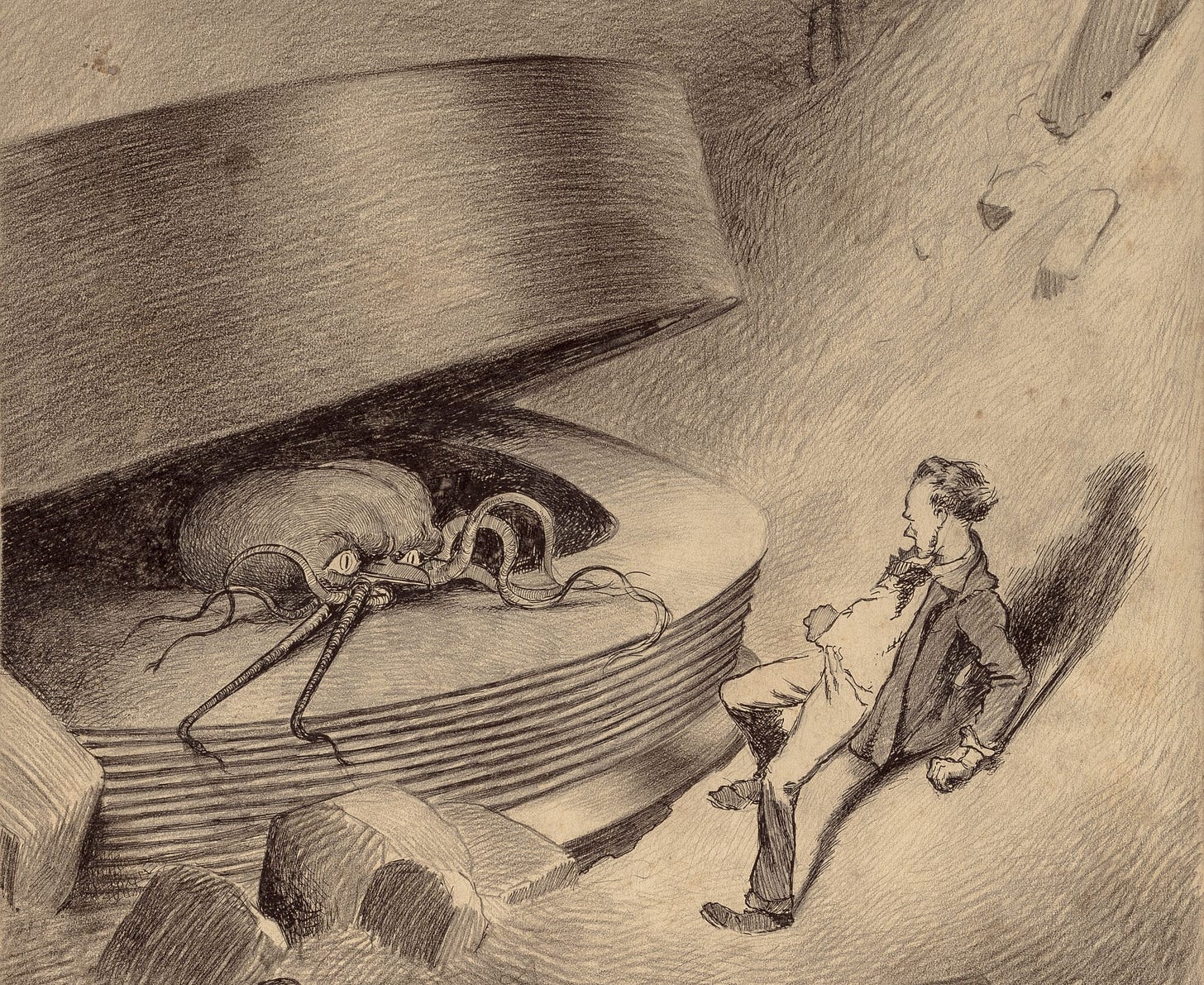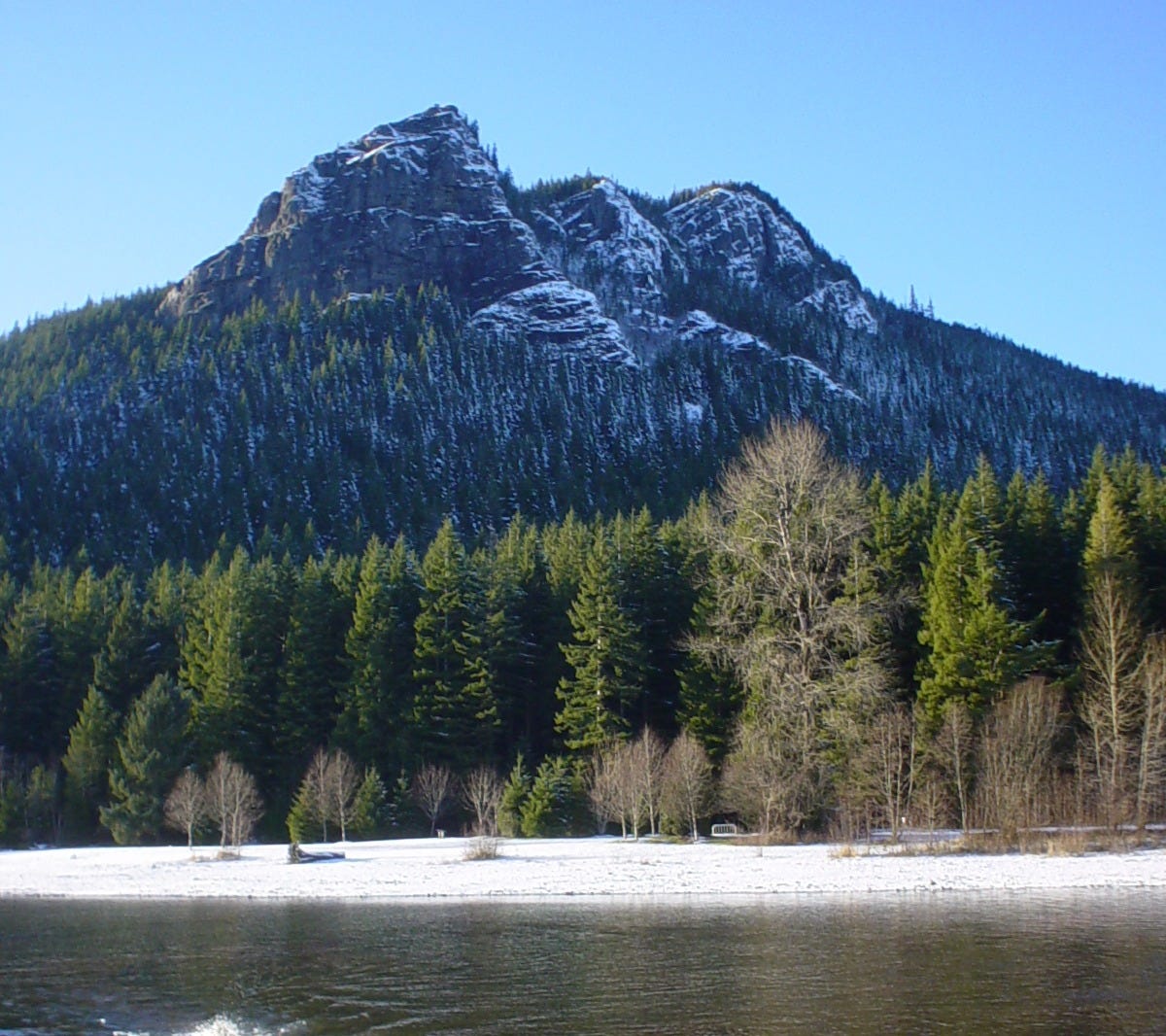So I had a bad dream last night. An alien-invasion kind of bad dream.
In this nightmare, I was home alone, when I heard a strange noise, and looked outside to see a flying saucer landing on the street. Think sleek, shiny, and very ET. My phone lit up, a barrage of notifications that aliens had landed, the east coast had already fallen, and they were moving west.
And then I got a call. The caller ID said it was a friend of mine who lives in North Carolina, but I knew instinctively it wouldn’t be him. And indeed, when I answered all I heard was the (literally) other-worldly sounds of alien-speak. Creepy, insectoid, clicking, inhuman. Then the translation followed:
Resistance is futile. We are more powerful than you can possibly imagine. We have taken control of your planet. Assume the docile position, exit your domicile, and present yourself for elimination.
I peaked outside and watched in horror as people began emerging from their homes, necks bent, hands crossed at the wrists and held out before them, as though they were already bound.
It may not come as a surprise that these invaders from space had an eerie resemblance to a certain son-of-a-South-African-apartheid-era-emerald-mine-owner who is currently pillaging his way through our federal institutions.
An overwhelming sense of fear and powerlessness washed over me. I was certainly not going to “assume the docile position,” but I was too afraid to do anything else either. Instead, I curled into a ball, wondering if they would search each house. If things would go worse for me because I did not immediately comply.
Then, with a wave of horror, I realized that my husband and son were hours late coming home. They were still out there. (Or at least, I hoped they were still out there.)
I catapulted from my bed, through the house, and toward the backdoor, with no more conscious intention than grabbing my largest garden hoe (the one with the wicked sharp spikes) and racing out into the darkness to find them.
I had no idea what I ought to do, I only knew that I would protect the ones I loved.
Do not mess with my beloveds, alien scum.
I jolted awake—heart pounding and stomach clenching with nausea. It took me a few seconds to register where I was, still in bed, my spouse sleeping peacefully beside me. And (for now at least) the aliens had not landed.
If you’re wondering if my dreams are always this literal—yes, I’m afraid they are. (I’ve never been able to decide if this is a sign that I’m really in touch with The Truth Of Things, or if my brain is just not very creative.)

This dream certainly doesn’t make me feel better, and it doesn’t really help me make sense of our situation either. But there was one thing that was immediately clear to me: that even self-preservation is not enough to prompt me (us?) to act. But I will fight—and fight pretty dirty—to protect the people I love.
I haven’t written anything for a few weeks. It’s frankly been too much, and I’ve been overwhelmed, just trying to breathe through the anger and the anxiety and the disbelief.
But I’ve also been very lucky—because our spring semester has started. And I am so fortunate to be working with amazing groups of students.
One of these is our Methods of Environmental Studies class, which I’m co-teaching with one of our wonderful biologists. Together, we’re giving students an interdisciplinary set of tools to help them understand and advocate for their local watershed. We’re learning about the history of our watershed—and of course I’m calling particular attention to its Indigenous history. Soon, we’ll be out in the field doing water quality testing, using methods from biology, chemistry, and geology. Then we’ll visit the site of a salmon habitat restoration project, learning more about what’s a stake there.
We’ll learn from Indigenous communities and how they are restoring regional saltwater marsh estuaries and salmon bearing streams. We’ll do some of our own reflective writing and read memoirs of people’s relationships with these waters. And we’ll learn tools of effective graphic design, to think about how we can best tell the story of this place, and how we can better take care of it.
In the midst of so much horror at the federal level, it occurs to me that we are teaching students how to fall in love with our place, and with our (wounded and polluted but still very present) watershed.
Because the first step of falling in love, is to really see something or someone. To be fully present with them. Then we learn how to listen to them, how to listen as though every single thing they have to convey is the most intriguing idea you’ve ever heard.
And then, because we love them, we are compelled to care for them, to protect them.
And I use that word compelled on purpose. Because it means to be driven, forcefully and irresistibly. And that kind of powerful internal compulsion only comes from love. Because its when we are enthralled that our care for the other exceeds our fear, or our instincts of self-preservation.
And that is the most powerful stuff.
I do not have answers right now. But I am turning to teachers whose wisdom I trust and believe in. I’m listening to the stories and teachings of Coast Salish elders, whose deep and abiding love, respect, and care for the Salish Sea persists, despite two centuries of colonial violence and cultural suppression.
I’m reading Steven Charleston’s compelling book We Survived the End of the World, about the lessons gleaned from the teachings of Indigenous prophets facing the genocide of settler colonialism.
And I’m reading African American theologian Barbara Holmes’ beautiful book Crisis Contemplation, exploring pathways for contemplative practice in the face of collective trauma.
There’s a lot here—and I will share more from these wonderful teachers later, I promise. For now, I just want to share a couple things from Holmes’ book that have really stuck with me. The first, is her resistance to the notion that “everything happens for a reason,” as though even terrible things are somehow pre-ordained by a supposedly loving God.
As she says:
“Nothing can be learned from a genocide or holocaust other than the human potential for unspeakable cruelty and our ability to survive together.”
At the same time, she also acknowledges the power that comes from joining together in survival and care. Because in these moments of shared crisis, we learn who we are to each other.
“A crisis forces those caught in its clutches to come to terms with the fact that life as we knew it may never be the same. When the crisis strikes, the response from the village must be a pause. There is little that we can do, but we can be. We can listen. We can love our neighbors, and we can host the s(S)pirit that flutters over every dawning day.”
Her words remind me, that while we should be doing all the things we can (signing the on-line petition, calling the legislator, attending the protest, joining the local chapter of that climate lobbying group), we need to operate from a place of inspirited listening and love—for human beings and for the living places that sustain us.
Because it’s the love that will propel us out of our stupor, and into the fight.

Thanks so much for reading and being part of my extended community during these trying times.
If you’d like to do some more listening, I was recently interviewed on the quite fabulous podcast Interchangeable White Ladies, hosted by Hope Teague Bowling and Annie Jansen. You can listen to the episode here!
And if you’d like a beautiful way to share the love today, check out this invitation from the UK-based Climate Coaltion!
As always, I love to hear from you. Click the heart, add a comment, restack, or share with others. We’re in this together.




Beautiful and accurate as always Suzanne!
Thank you for this, Suzanne. Keep going. In this age of disinformation, your work is resistance. Speaking of which (cue to shameless plug), I just posted a story this morning that's centered on the Salish Sea and touches on orcas, salmon, dams, civil disobedience and what Salish Sea indigenous culture and hazelnuts can teach us about resilience. https://open.substack.com/pub/chriswaltz/p/behold-the-power-of-the-hazelnut?r=2obphr&utm_campaign=post&utm_medium=web